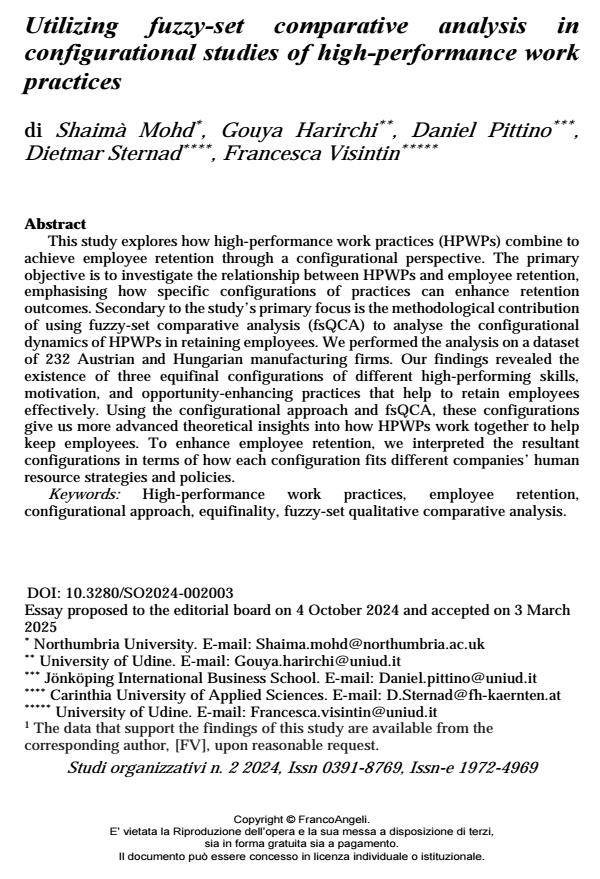Utilizing fuzzy-set comparative analysis in configurational studies of high-performance work practices
Journal title STUDI ORGANIZZATIVI
Author/s Shaimà Mohd, Gouya Harirchi, Daniel Pittino, Dietmar Sternad, Francesca Visintin
Publishing Year 2025 Issue 2024/2
Language English Pages 34 P. 39-72 File size 326 KB
DOI 10.3280/SO2024-002003
DOI is like a bar code for intellectual property: to have more infomation
click here
Below, you can see the article first page
If you want to buy this article in PDF format, you can do it, following the instructions to buy download credits

FrancoAngeli is member of Publishers International Linking Association, Inc (PILA), a not-for-profit association which run the CrossRef service enabling links to and from online scholarly content.
This study explores how high-performance work practices (HPWPs) combine to achieve employee retention through a configurational perspective. The primary objective is to investigate the relationship between HPWPs and employee retention, emphasising how specific configurations of practices can enhance retention outcomes. Secondary to the study’s primary focus is the methodological contribution of using fuzzy-set comparative analysis (fsQCA) to analyse the configurational dynamics of HPWPs in retaining employees. We performed the analysis on a dataset of 232 Austrian and Hungarian manufacturing firms. Our findings revealed the existence of three equifinal configurations of different high-performing skills, motivation, and opportunity-enhancing practices that help to retain employees effectively. Using the configurational approach and fsQCA, these configurations give us more advanced theoretical insights into how HPWPs work together to help keep employees. To enhance employee retention, we interpreted the resultant configurations in terms of how each configuration fits different companies’ human resource strategies and policies.
Keywords: High-performance work practices, employee retention, configurational approach, equifinality, fuzzy-set qualitative comparative analysis.
Shaimà Mohd, Gouya Harirchi, Daniel Pittino, Dietmar Sternad, Francesca Visintin, Utilizing fuzzy-set comparative analysis in configurational studies of high-performance work practices in "STUDI ORGANIZZATIVI " 2/2024, pp 39-72, DOI: 10.3280/SO2024-002003